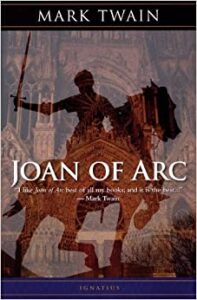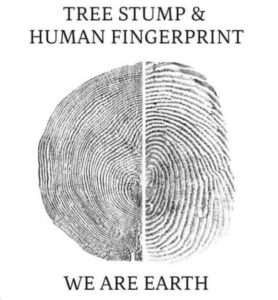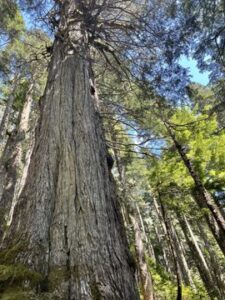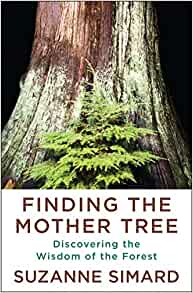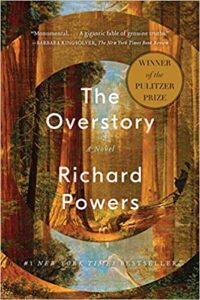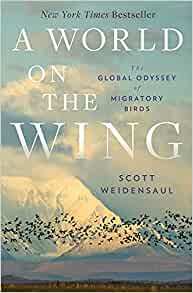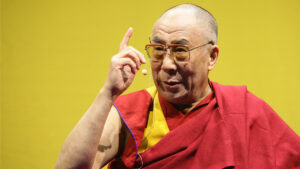The media is complicit.
June 5, 2021As an institution, the media no longer reflects, it shapes. NYTimes columnist Ezra Klein recently spoke with President Barack Obama about how the United States transitioned from “Yes We Can to MAGA.” Thoughtful questions and deeply reflective answers. Here I extrapolate President Obama’s comments about the media and his worried concerns about how the narrative is shaped through social media and far-right ‘news’ sources. -dayle
Full interview:
“What you just identified, in part because of the media infrastructure I described, and the siloing of media, in part because of, then, the Trump presidency and the way both sides went to their respective fortresses, absolutely. I think it’s real. I think it’s worse.
The decline of other mediating institutions that provided us a sense of place and who we are, whether it was the church, or union, or neighborhood, those used to be part of a multiple set of building blocks to how we thought about ourselves.
It spills over into everyday life and even small issues, what previously were not considered even political issues.
But some of it is a media infrastructure that persuaded a large portion of that base that they had something to fear and fed on that fear and resentment, that politics of fear resentment, in a way that, ironically, ended up being a straitjacket for the Republican officials themselves. And some of them got gobbled up by the monster that had been created and suddenly found themselves retiring. And they couldn’t function, because they weren’t angry or resentful enough for the base they had stoked.
It taught somebody like a Mitch McConnell that there is no downside for misstating facts, making stuff up, engaging in out and out obstruction, reversing positions that you held just a few minutes ago. Because now, it’s politically expedient to do so. That never reached the public in a way where the public could make a judgment about who’s acting responsibly and who isn’t.
And that, I think, was not driven by the politics of the moment. I mean, I think that the media was complicit in creating that dynamic in a way that is difficult. Because as we discovered during the Trump administration, if an administration is just misstating facts all the time, it starts looking like, gosh, the media’s anti-Trump. And this becomes more evidence of a left wing conspiracy, and liberal elites trying to gang up on the guy.
Ezra: I will say, in the media, one of our central biases is towards exciting candidates. You were an exciting candidate in 2008, but later on, that’s also something that Donald Trump activates.
President Obama: In a different way. You have a big set piece at the White House Correspondents Dinner, where “The Washington Post” invites Donald Trump after a year of birtherism to sit at their table.
But even in a broader sense, exciting candidates are usually, one, they shape perceptions of parties. But two, on the right, they tend to be quite extreme. They definitely tend to be in both directions, either more liberal or more conservative. But part of the dynamic, I think, you’re talking about — and then the media is pressured by social media, where —
You look out there, and you look around, like who’s up there on Facebook and on Reddit. And conflict sells.
But I have to tell you that there’s a difference between the issue of excitement, charisma, versus rewarding people for saying the most outrageous things.
So I don’t agree that that’s the only way that you can get people to read newspapers or click on a site. It requires more imagination and maybe more effort. And it requires some restraint to not feed the outrage, inflammatory approach to politics. And I think that folks didn’t do it.
And look, as I note towards the end of the book, the birther thing, which was just a taste of things to come, started in the right wing media ecosystem. But a whole bunch of mainstream folks, who later got very exercised about Donald Trump, they booked him all the time. Because he boosted ratings. But that wasn’t something that was compelled.
It was convenient for them to do. Because it was a lot easier to book Donald Trump to let him claim that I wasn’t born in this country than it was to how do I actually create an interesting story that people will want to watch about income inequality. That’s a harder thing to come up with.
My entire politics is premised on the fact that we are these tiny organisms on this little speck floating in the middle of space. The analogy I always used to use when we were going through tough political times, and I’d try to cheer my staff up, then I’d tell them a statistic that John Holdren, my science advisor, told me, which was that there are more stars in the known universe than there are grains of sand on the planet Earth.
I guess, that my politics has always been premised on the notion that the differences we have on this planet are real. They’re profound, and they cause enormous tragedy as well as joy. But we’re just a bunch of humans with doubts and confusion
We do the best we can. And the best thing we can do is treat each other better, because we’re all we got. And I would hope that the knowledge that there were aliens out there would solidify people’s sense that what we have in common is a little more important.
Three books, a book I just read, “The Overstory” by Richard Powers, it’s about trees and the relationship of humans to trees. And it’s not something I would have immediately thought of, but a friend gave it to me. And I started reading it, and it changed how I thought about the earth. And it changed how I see things, and that’s always, for me, a mark of a book worth reading.
“Memorial Drive” by Natasha Trethewey, it’s a memoir, just a tragic story. Her mother’s former husband, or her former stepfather, murders her mother. And it’s a meditation on race, and class, and grief, uplifting surprisingly, at the end of it but just wrenching.
And then this one is easier to remember. I actually caught up on some past readings of Mark Twain. There’s something about Twain that I wanted to revisit, because he speaks a little bit of — he’s that most essential of American writers. And there’s his satiric eye and his actual outrage that sometimes gets buried under the comedy I thought was useful to revisit.”
Mark Twain considered his best book to be one he spent 12 years writing. Excellent.
-dayle
Amazon:
Very few people know that Mark Twain (Samuel Clemens) wrote a major work on Joan of Arc. Still fewer know that he considered it not only his most important but also his best work. He spent twelve years in research and many months in France doing archival work and then made several attempts until he felt he finally had the story he wanted to tell. He reached his conclusion about Joan’s unique place in history only after studying in detail accounts written by both sides, the French and the English. Because of Mark Twain’s antipathy to institutional religion, one might expect an anti-Catholic bias toward Joan or at least toward the bishops and theologians who condemned her. Instead one finds a remarkably accurate biography of the life and mission of Joan of Arc told by one of this country’s greatest storytellers. The very fact that Mark Twain wrote this book and wrote it the way he did is a powerful testimony to the attractive power of the Catholic Church’s saints. This is a book that really will inform and inspire.
Unfolding catastrophe.
Social media post by Tzeporah Berman on May 27th:
“Please…just….please act now. This should be illegal. I saw stumps of 1000 year old trees with flagging tape on 2000 year old yellow cedars. It’s like destroying Pantheon or the Sistine Chapel to make a buck. Enough already.”
Tzeporah lives in Vancouver and is the International Program Director for https://www.stand.earth. She is also an adjunct professor at York University and the chair for Fossil Fuel Non-Proliferation Treaty…https://fossilfueltreaty.org
Fresh Air
May 4th, 2021
Trees Talk To Each Other. ‘Mother Tree’ Ecologist Hears Lessons For People, Too
Trees are “social creatures” that communicate with each other in cooperative ways that hold lessons for humans, too, ecologist Suzanne Simard says.
Simard grew up in Canadian forests as a descendant of loggers before becoming a forestry ecologist. She’s now a professor of forest ecology at the University of British Columbia.
Trees are linked to neighboring trees by an underground network of fungi that resembles the neural networks in the brain, she explains. In one study, Simard watched as a Douglas fir that had been injured by insects appeared to send chemicalwarning signals to a ponderosa pine growing nearby. The pine tree then produced defense enzymes to protect against the insect.
“This was a breakthrough,” Simard says. The trees were sharing “information that actually is important to the health of the whole forest.”
In addition to warning each other of danger, Simard says that trees have been known to share nutrients at critical times to keep each other healthy. She says the trees in a forest are often linked to each other via an older tree she calls a “mother” or “hub” tree.
THIS:
[Trees] get old. They do eventually decline. And dying is a process, and it takes a long, long time. It can take decades for a tree to die. In the process of dying, there’s a lot of things that go on. And one of the things that I studied was where does their energy — where does the carbon that is stored in their tissues — where does it go? And so we label some trees with carbon dioxide — with C13, which is a stable isotope — and we watched as we actually cause these trees to die. We stress them out by pulling their needles off and attacking them with budworms and so on. And then we watched what happened to their carbon.
And we found that about 40% of the carbon was transmitted through networks into their neighboring trees. The rest of the carbon would have just dispersed through natural decomposition processes … but some of it is directed right into the neighbors. And in this way, these old trees are actually having a very direct effect on the regenerative capacity of the new forest going forward.
This is a completely different way of understanding how old trees contribute to the next generations — that they have agency in the next generations. And our practices of salvage logging to get rid of dying trees, or trees that have just died or have been burned in wildfires — if we go in and cut them right away, we’re actually short-circuiting that natural process.
Full interview with Dave Davies/NPR’s Fresh Air:
One of the books recommended by President Barack Obama in conversation with the NYTimes Ezra Klein:
“A book I just read, “The Overstory” by Richard Powers, it’s about trees and the relationship of humans to trees. And it’s not something I would have immediately thought of, but a friend gave it to me. And I started reading it, and it changed how I thought about the earth. And it changed how I see things, and that’s always, for me, a mark of a book worth reading.”
Full interview: https://www.nytimes.com/2021/06/01/opinion/ezra-klein-podcast-barack-obama.html
Eight trees were destroyed in May in name of capitalism and concrete next to my place in Sun Valley, Idaho. Unnecessary. And tragic. All were mature, healthy trees. When will we stop? Will we ever? -dayle
‘Unless someone like you cares a whole awful lot,
nothing is going to get better. It’s not.’ -The Lorax
NPR/Dave Davies
Naturalist Traces The ‘Astounding’ Flyways Of Migratory Birds
Did you know that when some migratory birds prepare for flights that can take them thousands of miles, their intestines and digestive organs actually shrink while their heart, lung and leg muscles can double in size? That’s just one of the amazing facts you can learn from our guest, Scott Weidensaul. He spent decades studying migratory birds, reporting on and writing about them and doing fieldwork and tracking and conservation efforts. The scale of bird migration is staggering, involving billions of birds, and the diversity of the species’ mating, nesting and flying habits is awe inspiring. In a new book, Weidensaul writes about what he calls this majestic global pageant and about the threats the animals face. One study found that since 1970, roughly 30% of North American birds have disappeared, more than 3 billion of them. Scott Weidensaul has written 30 previous books, and his articles have appeared in Audubon, National Wildlife and other publications. He co-founded Project SNOWstorm, which tracks and studies snowy owls and is a founder of the Critical Connections project, which is tracking the migration of birds that breed on national park lands in Alaska. His new book is “A World On The Wing: The Global Odyssey Of Migratory Birds.” He joins us from his home in Milton, N.H.
https://www.npr.org/2021/03/29/982232107/naturalist-traces-the-astounding-flyways-of-migratory-birds
Mindful, Selfless, and Compassionate
Harvard Business Review
Andreas Rentz/Getty Images
Summary.
The Dalai Lama shares his observations on leadership and describes how our “strong focus on material development and accumulating wealth has led us to neglect our basic human need for kindness and care.” He offers leaders three recommendations. First, to be mindful: “When we’re under the sway of anger or attachment, we’re limited in our ability to take a full and realistic view of the situation.” Also, to be selfless: “Once you have a genuine sense of concern for others, there’s no room for cheating, bullying, or exploitation; instead you can be honest, truthful, and transparent in your conduct.” And finally, to be compassionate: “When the mind is compassionate, it is calm and we’re able to use our sense of reason practically, realistically, and with determination.”
by the Dalai Lama with Rasmus Hougaard
What can leaders do?
Be mindful
Cultivate peace of mind. As human beings, we have a remarkable intelligence that allows us to analyze and plan for the future. We have language that enables us to communicate what we have understood to others. Since destructive emotions like anger and attachment cloud our ability to use our intelligence clearly, we need to tackle them.
Fear and anxiety easily give way to anger and violence. The opposite of fear is trust, which, related to warmheartedness, boosts our self-confidence. Compassion also reduces fear, reflecting as it does a concern for others’ well-being. This, not money and power, is what really attracts friends. When we’re under the sway of anger or attachment, we’re limited in our ability to take a full and realistic view of the situation. When the mind is compassionate, it is calm and we’re able to use our sense of reason practically, realistically, and with determination.
Be selfless
We are naturally driven by self-interest; it’s necessary to survive. But we need wise self-interest that is generous and cooperative, taking others’ interests into account. Cooperation comes from friendship, friendship comes from trust, and trust comes from kindheartedness. Once you have a genuine sense of concern for others, there’s no room for cheating, bullying, or exploitation; instead, you can be honest, truthful, and transparent in your conduct.
Be compassionate
The ultimate source of a happy life is warmheartedness. Even animals display some sense of compassion. When it comes to human beings, compassion can be combined with intelligence. Through the application of reason, compassion can be extended to all 7 billion human beings. Destructive emotions are related to ignorance, while compassion is a constructive emotion related to intelligence. Consequently, it can be taught and learned.
Buddhist tradition describes three styles of compassionate leadership: the trailblazer, who leads from the front, takes risks, and sets an example; the ferryman, who accompanies those in his care and shapes the ups and downs of the crossing; and the shepherd, who sees every one of his flock into safety before himself. Three styles, three approaches, but what they have in common is an all-encompassing concern for the welfare of those they lead.”
Full piece:
